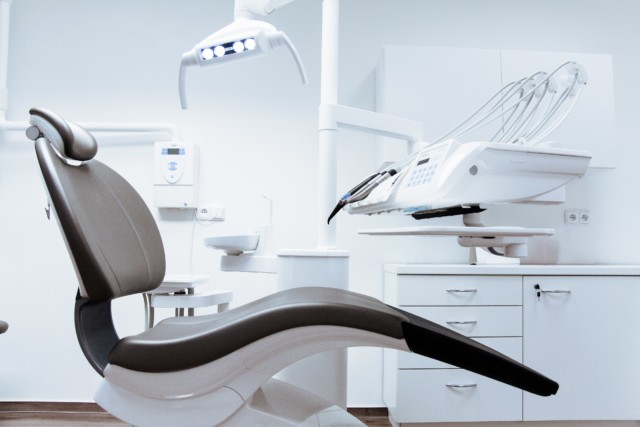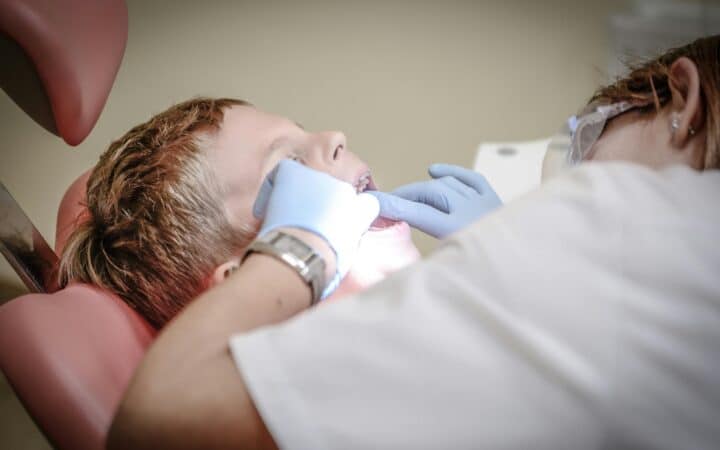Parents and dentist both share the same role when it comes to visiting the dentist for a dental appointment. When it comes to parents, any anxiety that you display your child will likely notice it. An unfriendly dentist, on the other hand, can cause a child to feel tense and afraid. Some children are not comfortable about sitting on the dentist chair. Even the thought of a small needle can make them feel scared. There might be many reasons for this unfounded fear. Previous bad experiences and some taunting from people who makes them think that they will get hurt contribute to this reaction.
Pediatric dental fear as it is referred to if left unchecked can leave an unforgettable impression that can last for a lifetime. This can adversely impact not just the physical but, psychological health of a young patient. According to research, the primary cause of children’s fears has got to be the sound of the drill after prophy paste application and dental cleaning. Kids fear pain in case the dentist uses fluoride varnish on their teeth. Some studies mention the use of anesthesia and certain medication to minimize the level of pain.
Sources of Dental Fear in Kids
In order to understand why kids are scared of the dentist you should know where this is coming from:
- Fear of painful experience
- The sight of dental instruments
- Unappealing dental setting
- Emotional reaction due to what they perceive as a potential threat
- Family relationships
- Child rearing techniques
The number one reason for dental fear in kids is due to inadequate preparation for the first dental visit. A child’s dental fear can build up in the waiting area. Sometimes a child will throw the fit once he sits on the dental chair. Expect these various reactions from children during dental visits. Some can result in a missed or canceled dental appointment.
- Crying
- Flushed expression
- Sweating
- Constant unfounded complaints
- Panic attacks
When Should A Child First Visit The Dentist?
Parents are at lost as to when they need to take their child to the dentist. Some think that they need to wait until their child’s teeth come out. According to the American Academy of Pediatric Dentistry, they recommend that a visit as soon as the first tooth erupts. The same sentiment is shared by the American Dental Association experts. The right age to visit the dentist should be between the age of one or two. As the saying goes “start them early”. However, when it comes to a dental visit add the words to start them on the right path.
If this is your child’s first visit to the dentist you need to give him a general view of how the visit will go. If he is a toddler you can play with him before the dental appointment. Make him think that a visit to the doctor is similar to visiting his favorite playground. This time there is somebody who takes charge of what happens: the dentist. Emphasize that this is not a bad thing at all. In fact, it would be something that he can look forward to especially if he builds a friendly relationship with his dentist. It is actually easy to win over a child’s trust with the right approach.
The Role Parent’s Play- Child’s First Visit to the Dentist
To help your child on his dental visit and make it go smoothly without a hitch you must do the following:
-
Prepare your child
Tell your child about your plans to visit the dentist but, limit the details that you wish to give. Your child should get straight and short honest answers to his questions. Allow the dentist to explain the more detailed explanation about the dental procedure. Let the dentist explain how he will use prophy paste to clean up your child’s teeth. Permit the dentist to share what he will do when he applies fluoride varnish on your child’s teeth.
The dentist is specifically trained to handle all kinds of patients especially kids. Your dentist can describe the procedure in a non-threatening way that the child can understand. Once your child is ready he will not fear any of the procedures from the easy part like using prophy paste to a more complicated procedure like pulling the decaying tooth.
-
Create a favorable and friendly image of your dentist
If your child perceives the dentist in a whole new light he will be less emotionally affected. The dentist usually uses a friendly tone of voice once they work on the child’s mouth and teeth. Share how the dentist looks at all the teeth and check on your child’s gums to make it strong and healthy. The dentist will always check on how the top and bottom teeth work well together. This is also a form of positive reinforcement but, this time it is more about the dentist role.
-
Avoid using words that will bring negative reactions
Do not use the words shot, painful or hurt when you describe the trip to the dentist. Using words like this will build-up fear instead of trust. Your child will associate the visit to a more pleasant experience if you do avoid emphasizing the use of these and similar words. Avoid sharing an unpleasant experience that you may have as a child during your dental visit.
-
Place the emphasis of what a dental visit can do
Share to your child how important it is to maintain healthy teeth and gums. Emphasize how dentist are actually friendly doctors whose job is to help keep the teeth healthy. Share to your child how the use of prophy paste will make their teeth clean and white. You can add how when dentist use fluoride varnish this makes their teeth stronger. Mentioning benefits to make them look better and more appealing to others will encourage your child to welcome the dental visit.
Some dentist will introduce your child to exploring various dental instruments. Although those with pointy and sharp edges should be avoided. A small wound can make your child scared. You can allow your child to sit on the dental chair and feel comfortable on it. Once your child feels comfortable it is time for the dentist to start working on his teeth.
-
Limit the type of rewards
Some parents make the mistake of promising to buy their child’s favorite chocolates or candies. Such sweets will only encourage plaque and tooth decay buildup. If your child will go with you to the dentist you should use positive reinforcement instead. You must praise your child for his cooperative behavior while the dentist was placing prophy paste and fluoride varnish in his teeth. You can ask your child to show you his most powerful “clean teeth and fresh breath smile”.
Giving kids toys will work better than promising stickers for good behavior. If you can manage to buy his favorite action figures used as promotion for toothbrushes or toothpaste do this. He will clearly associate his dental visit to something fun and playful. He will be more receptive the next time you ask him to visit the dentist with you.
-
Introduce relaxation techniques
Even children will respond to deep breathing and similar relaxation methods. You should guide your child on proper breathing. Slow deep breathing can allow oxygen to flow through their body. They will feel relax and calm. Avoid shallow breathing because this produces a different effect by increasing the feeling of anxiety.
The same techniques used in adults can be used in kids as well. Even if it looks like kids are more vulnerable than adults there are actually older people who suffer from the same level of fear as those seen in kids.
The Bottom Line
From the first visit onward a child should come for a dental visit every six months. This will ensure that his dental issues will be addressed properly. It could be a lisping, teeth grinding marks, and breathing through the mouth. Expect the dentist to build on this first visit. He will add more steps in each succeeding visits. For example, at the next visit, the dentist can count your child’s teeth while he brushes it with prophy paste. On a future visit, he can add fluoride varnish to this step. It is also during these repeated visits that you may be allowed to step out of the dental clinic. This is to ensure that your child gains a sense of independence without breaking down into emotional outburst.
Keep in mind that it is perfectly normal for children to be afraid. Some children are not great at handling parental separation than most kids. Since each child is different from the other, others are afraid of the unknown. Some kids are fearful even of a simple prophy paste application procedure. While other children fear what happens to their teeth after a fluoride varnish application. Telling them that they cannot brush for at least 4 to 6 hours after fluoride varnish might make one child happy. Other kids would be concern why it is so. Some dentist will tell you to allow your child to wait until the next morning before he can floss or brush his teeth. Don’t forget to tell your child to spit when rinsing.
Collaborative post












Leave a Reply